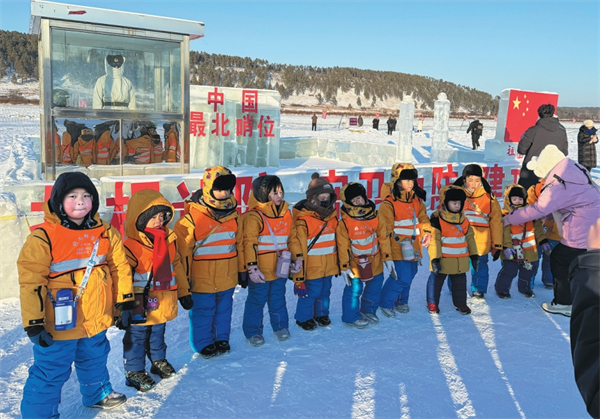Home>Harbin Today
Despite Harbin's extreme cold, an urge to return still burns
Updated : 2023-02-13
By ( chinadaily.com.cn )
I can't remember when this annual extravaganza of Brobdingnagian snow sculptures and ice-block buildings first crossed my radar, but it was probably some time in the early 1990s, when I was in Japan teaching English. Ever since, I've been promising myself that I would be spending "next winter in Heilongjiang".
Of course, the idea resurfaced when I moved to Beijing and getting there no longer required visas or a transcontinental flight — though Harbin (provincial capital of Heilongjiang) is still 1,300 kilometers away — but of course, I was stymied by the pandemic. So, when restrictions lifted earlier this year, I made Harbin my first choice travel destination.
Being a child of extremes, I like my summers hot and my winters cold. But Harbin pushed my envelope. Daytime temperatures were a balmy — 24 C the weekend I was there — and I say balmy because the week after, they dropped to — 33 C — and it was cold enough that my fingers froze in seconds, which complicated taking photos and made wandering around undesirable.
For you see, the festival wasn't my only goal. My initial interest in Harbin grew out of its brief cosmopolitan efflorescence in the early 20th century as a mini-Shanghai (or rather, a mini-Moscow); a city of two halves, one Manchu and the other Russian.
I have a bit of a soft spot for these "neither here nor there" places that, as Constantine P. Cavafy once wrote of Alexandria in Egypt, are in, if not of, their host country. While most other examples were the offspring of empire or colonialism, some were sprung of different loins. In Harbin's case, that "other" was the construction of the China Eastern Railway, a shortcut on the Trans-Siberian from Chita to Vladivostok through Chinese territory.
As the railway's main town, the minor Manchu settlement slowly filled up with Russian engineers, laborers, and their families. They attracted butchers, bakers and candlestick makers, and plenty of what we in the United Kingdom call "wide boys", people who aren't averse to (ahem) "cutting corners "to get what they want. After 1917, Russian Harbin grew exponentially, as dispossessed aristocrats, nervous Jews, White Russian officers, and others unwilling or unable to live in Russia, arrived en masse.
So in addition to the ice sculptures, I wanted three things from my Harbin trip: to admire its macaroon-colored Baroque Revival architecture, so reminiscent of St. Petersburg's Nevsky Prospekt, to visit the Jewish cemetery and to see the former Russian Orthodox cathedral.
Reader, I failed. Oh, Snow and Ice World was glorious, a shimmering wonderland that lit up like a '90s rave after dark, but thwarted by frozen feet and (to my eternal shame) a lazy lunch at January Coffee — where I could barely get my hands around my Irish coffee after a marrow-freezing morning among the glittering snow sculptures on Sun Island — I ran out of time and had to make do with seeing St. Sophia from the outside and squinting at rows of Russian Baroque buildings as I raced back to the hotel in the dark. And I didn't even get close to the cemetery.
Am I disappointed? In myself, a little. I should have toughed it out. Instead, I'll take partial success to mean that Harbin and I aren't finished yet.

Harbin ramps up childcare services
A new comprehensive service center for childcare in Harbin is expected to be finished by the end of the year.
-
Talent policies drive enterprise development in Harbin
Harbin's "30 New Talent Policies" represents an iterative upgrade to the talent policy system, helping attract and retain talent to bolster economic and social development.
-
Official website of 2025 Asian Winter Games goes live
Harbin, the host city of the 9th Asian Winter Games, has announced that the official website for the 2025 event has recently gone live.
-
Harbin launches measures to facilitate more foreign trade
In the first three quarters of 2023, the total import and export value of Heilongjiang province's goods trade hit 218.22 billion yuan.





